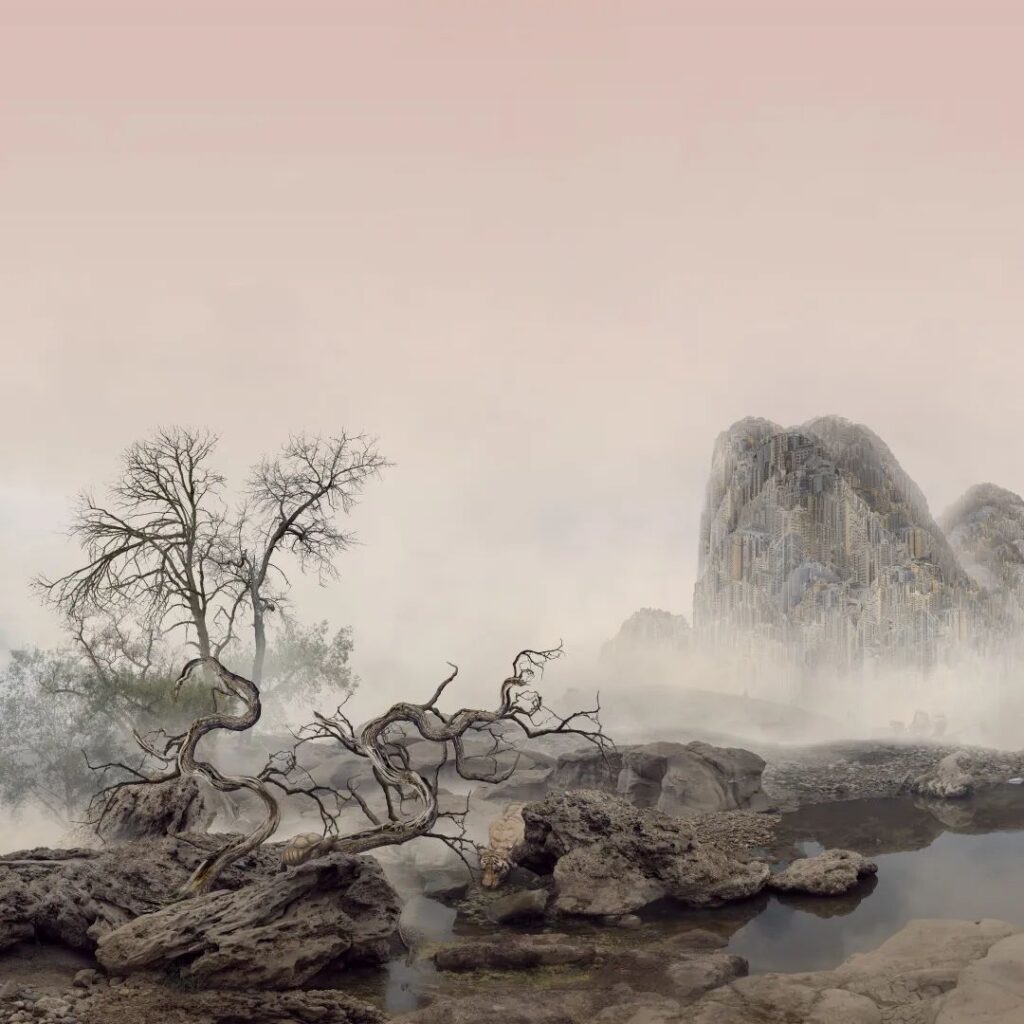In our latest Artist Voice, we speak to artist Yang Yongliang. Being exposed to classical Chinese culture, Yang has blended photography, images, and traditional Shan Shui (Chinese landscape painting) so as to create subtle conversations between tradition and modernity, nature and humanity.

Yang Yongliang
“I am more concerned with how to express my ideas in photographs, which is also an aesthetic expression.”
Born in Shanghai in 1980, Yang Yongliang received training in traditional Chinese Shui Mo (ink washing painting) and calligraphy since childhood. Later he studied Visual Communication at Shanghai Institute of Design of China Academy of Art, where he undertook a systematic study of digital image creation.
In 2005, Yang began his career as an artist with the goal of “creating new forms of contemporary art”. In his practice, Yang attempts to combine expressions of contemporary art with the aesthetics of traditional Chinese literati painting, especially the connotations of landscape painting from the Northern Song Dynasty.Yang’s digital Chinese landscapes have redefined traditional landscape paintings, featuring a massive amount of urban images reconstructed, and recomposed. Poetic and quaint as it appears to be when seen from a distance, it unfolds a fable of modern civilization if one takes a closer look. The seemingly otherworldly landscape is the microcosm of modern cities formed by scattering human-built structures and machines.
To Yang, traditional Chinese Shan Shui has certain intercultural properties. So, the point is how to boost or reactivate the potential of this symbol, or how to apply it to the conversation with today’s reality. Yang said in an interview, “I’m trying to express the break using the spirit of inheritance. Even though the collapse is inevitable, I still hope to find a cultural clue that has not been completely lost.”
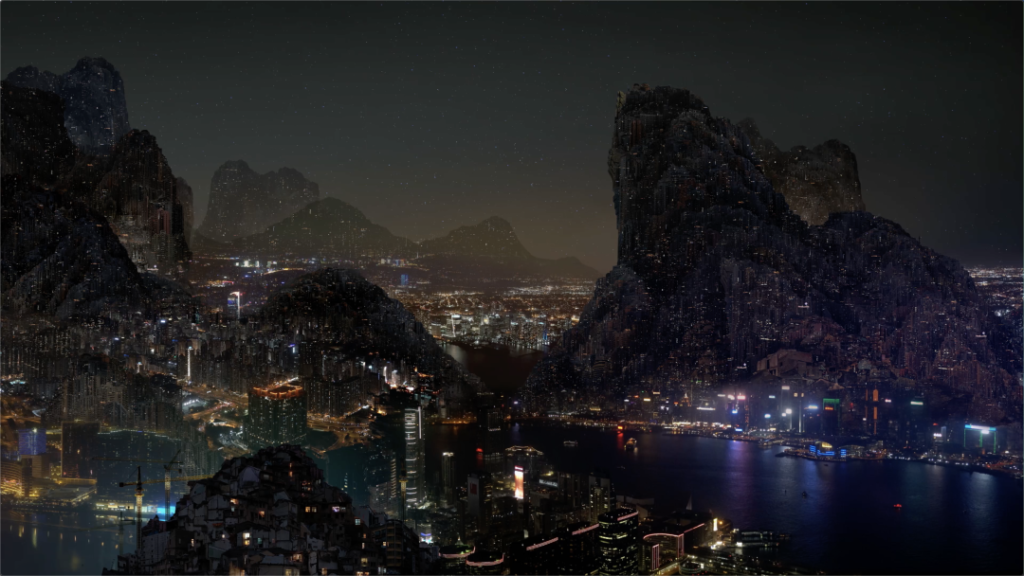
©️ Yang Yongliang, Glows in the Night, 2019. Courtesy of Matthew Liu Fine Arts (Shanghai)
Yang’s works have been recognized by the artistic community and market in recent years. His works have been collected by major art galleries and public institutions worldwide, including Metropolitan Museum of Art in New York, Museum of Fine Arts in Boston, the British Museum in London, Paris Museum of Modern Art, National Gallery of Victoria in Melbourne, Ullens Centre for Contemporary Art in Beijing, etc. Matthew Liu Fine Arts (Shanghai) has brought his works to PHOTOFAIRS Shanghai many times. In its seventh edition, Yang has gained favour from collectors at home and abroad with his video work Glows In The Night.
Created in 2019, Glows In The Night is a reflection of light pollution in cities featuring brilliant fireworks and skyglow in large celebrations, which brings up ecological concerns caused by urbanisation, commercialization and consumerism. In fact, the devastation brought by modernization on the existence of humans and nature is an all-time theme of Yang’s creation. And he has sorted through several opposed relationships contained therein: 1) fast-growing urbanisation and environment being disrupted, 2) the universal influence of globalisation and the gradual decline of local traditional culture, 3) the rapidly consuming business culture and the lack of deeper spiritual needs of humanity.
Yang’s digital landscapes not only present other stories of development to more people. In terms of art, by “grafting” digital technology into traditional paintings, he also brings a greater diversity of space and possibilities to photography.
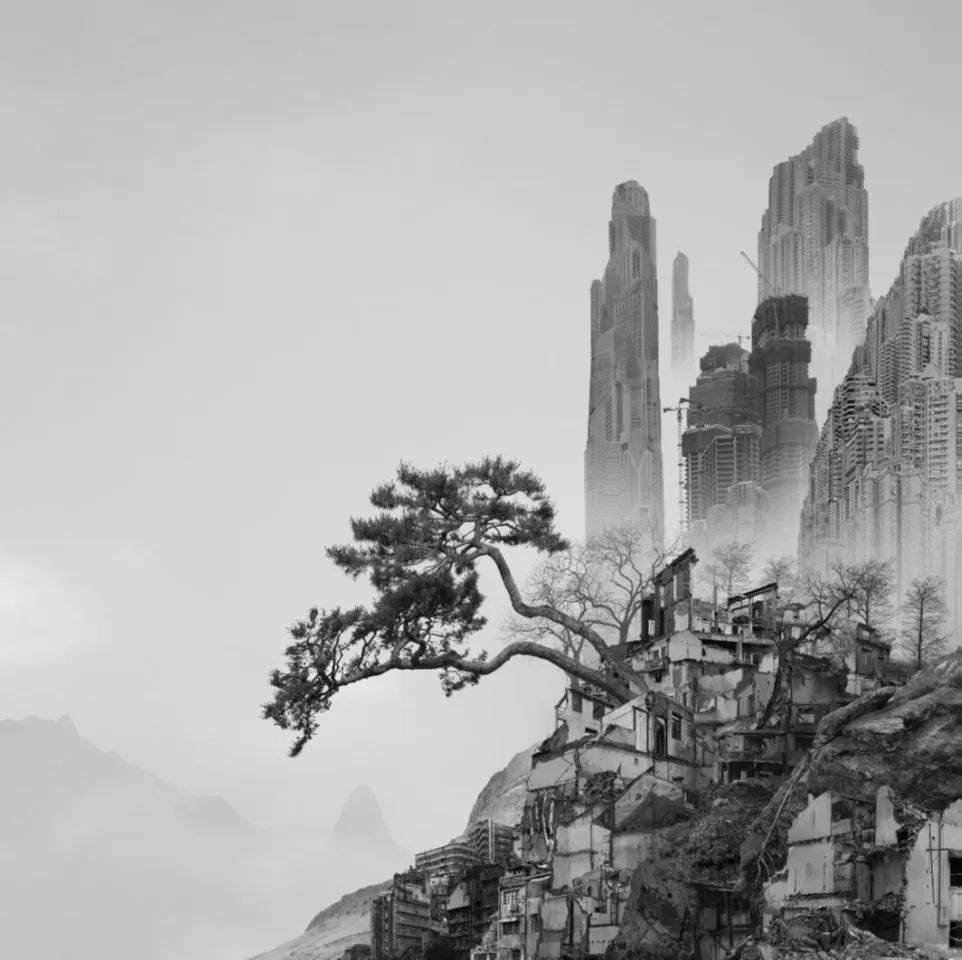
©️ Yang Yongliang, Time Immemorial - Old Pine, 2016. Courtesy of Matthew Liu Fine Arts (Shanghai)
PF: There are many details in your works, even forming a special “brushstroke”. Could you please unveil more challenges and difficulties you have encountered in your creation?
Yang Yongliang: I often use photographs or image materials of urban landscapes to compose traditional Chinese Shan Shui, however, Chinese painting and real photography are essentially two tracks that never touch in terms of perspective, contrast of light and dark, colour composition, and the proportion of different objects in the work, etc. Since they are two completely different systems, my greatest challenge was to balance the visual differences between the two. As a result, the works not only conform to the real perspective and angle of view in a closer look, but also fit the aesthetic rules of de-perspective and cavalier perspective in ancient Chinese painting if people look from a distance.
PF: There is a perception that taking pictures is only a way for you to collect materials. In fact, you are using them to create images with your own opinion. Do you agree? And what does photography mean to you?
Yang Yongliang: I basically agree with this view. In the process of material collection, thanks to the great advances in digital technology, digital photography which allows for easy operation saved me some effort. Instead, I invested a lot of time searching for the materials I needed. Furthermore, my photographic works vary greatly from traditional methods of creating photographs, so it’s hard to find a reference to compare. Therefore, my creation began in a real sense after photo collection.
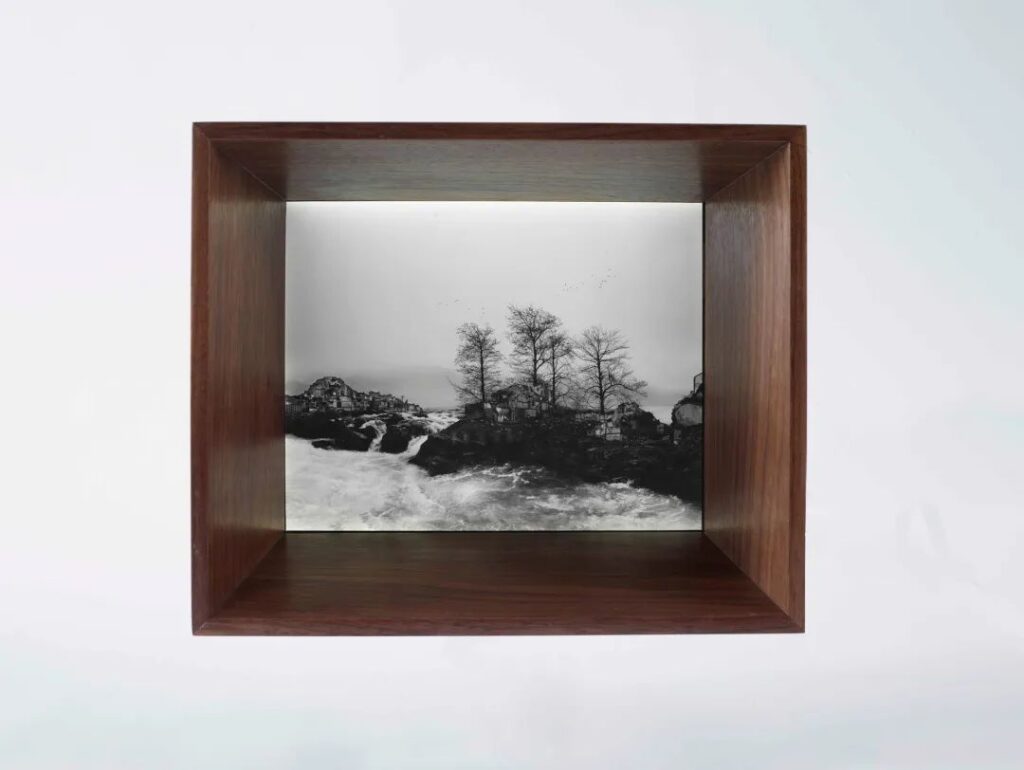
©️ Yang Yongliang,Time Immemorial - The Flock, 2016. Courtesy of Matthew Liu Fine Arts (Shanghai)
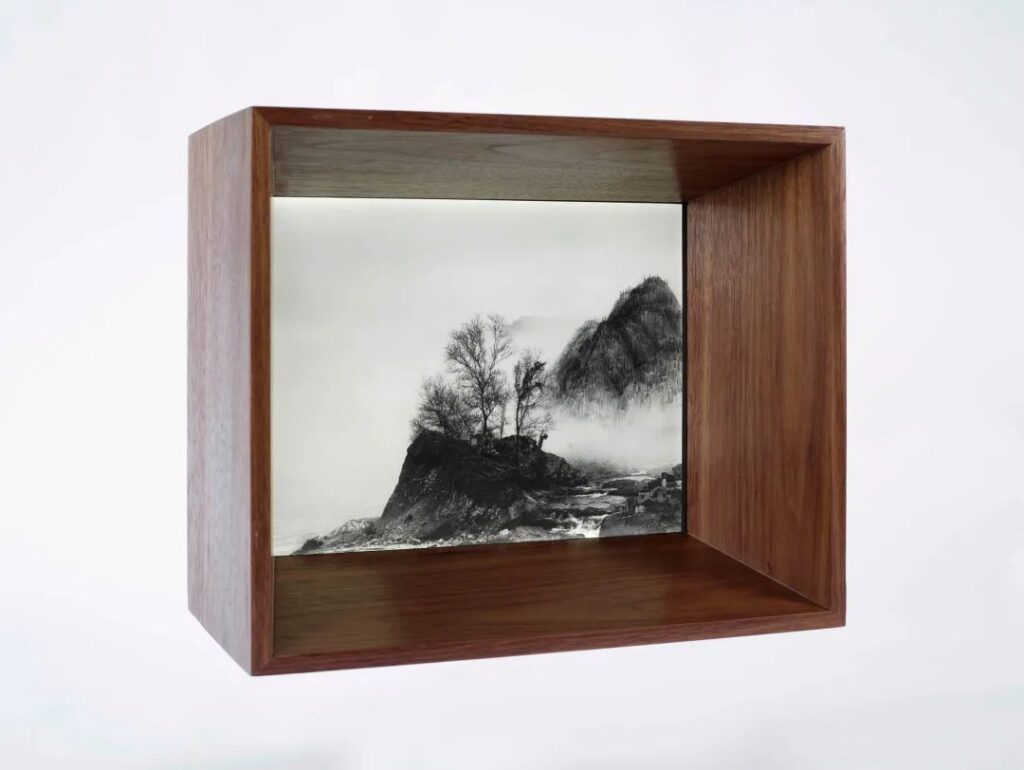
©️ Yang Yongliang,Time Immemorial - The Rock, 2016. Courtesy of Matthew Liu Fine Arts (Shanghai)
PF: Digital image technology is an important tool for you, so how do you see its connection with traditional photography?
Yang Yongliang: The difference, in my interpretation, is digital innovation, like the distinction between human-driven vehicles and self-driving cars. But it’s not that important for me because I am more concerned with how to express my ideas in photographs, which is also an aesthetic expression. Therefore, I’m rather open to new technology and always keep up with the latest technology and new way to see and experience art, just like my VR work Eternal Landscape in 2017.
PF: You keep exploring the conflict and opposition between the past and the present from different dimensions. After years of creation, do you have any new thinking of tradition and now? Especially after the pandemic, your creation seems to be more dazzling. Could you talk about your changes in creation methods and frame of mind?
Yang Yongliang: In recent years, I have been extending the dimension of viewing works and the diversity of creation forms. The medium has evolved from plane-based photography to video, experimental film, 360 VR, and panoramic immersive installation. Now, an AR subproject is well under way. After the pandemic, I spent most of my time working in New York, and a sense of freedom has been released from my works, most of which were previously black and white. I owe these changes to the major shift in my surroundings and lifestyles, which are naturally reflected in my works.
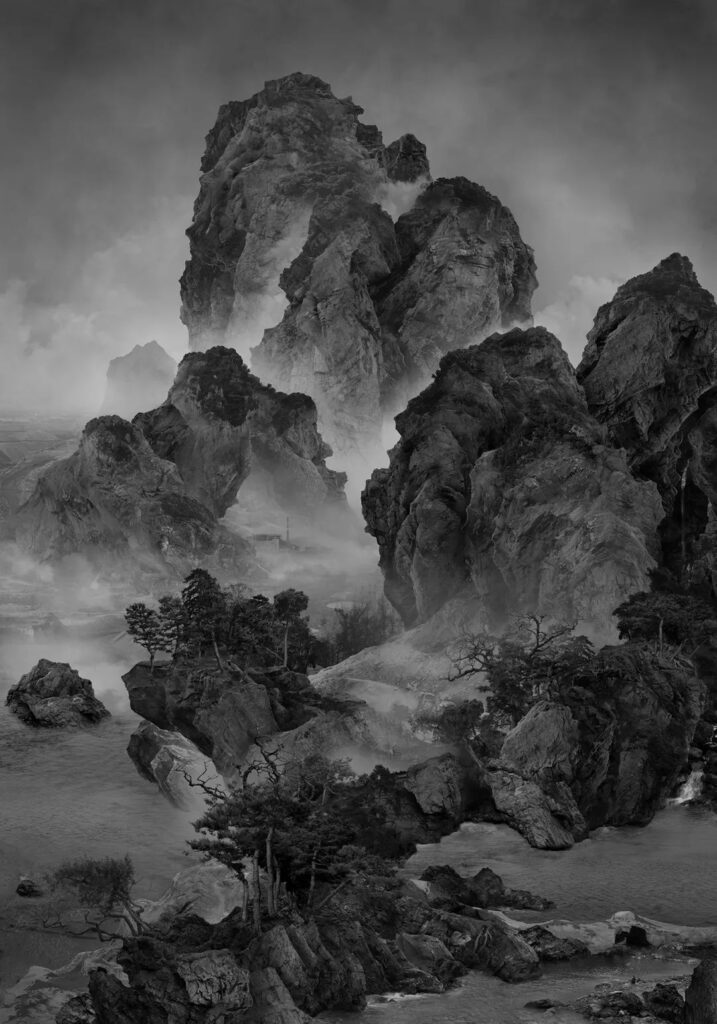
©️ Yang Yongliang, Sitting alone by A Stream, 2019. Courtesy of Matthew Liu Fine Arts (Shanghai)
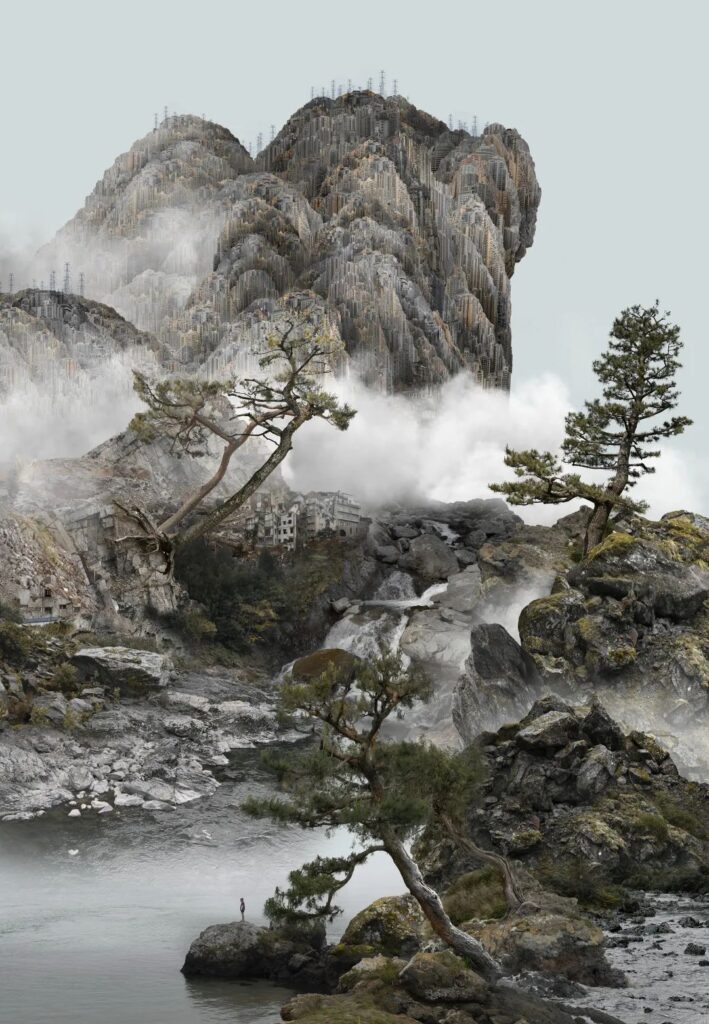
©️ Yang Yongliang, Child, 2021. Courtesy of Matthew Liu Fine Arts (Shanghai)
PF: You have dabbled in image creation in recent years. What is the “stimulation” from images? What is next for your creation?
Yang Yongliang: Yes, compared to photos, images can be extended from different dimensions, offering a surrounding and immersive experience to human senses. This is more in line with the viewing habit of people living fast-paced lifestyles. I am currently planning several creations facing different directions. Experimental film, panoramic immersive images, and even theatrical expressions will be the main experimental fields in the future.
